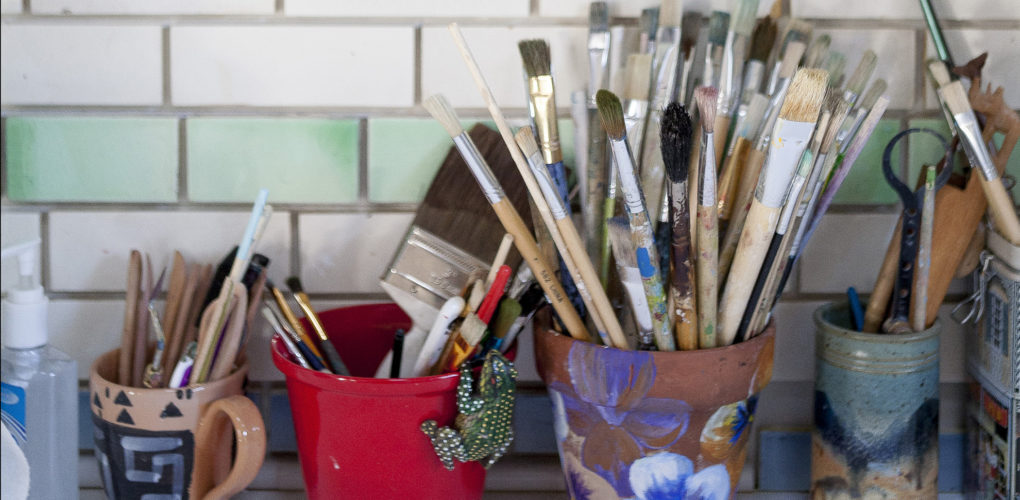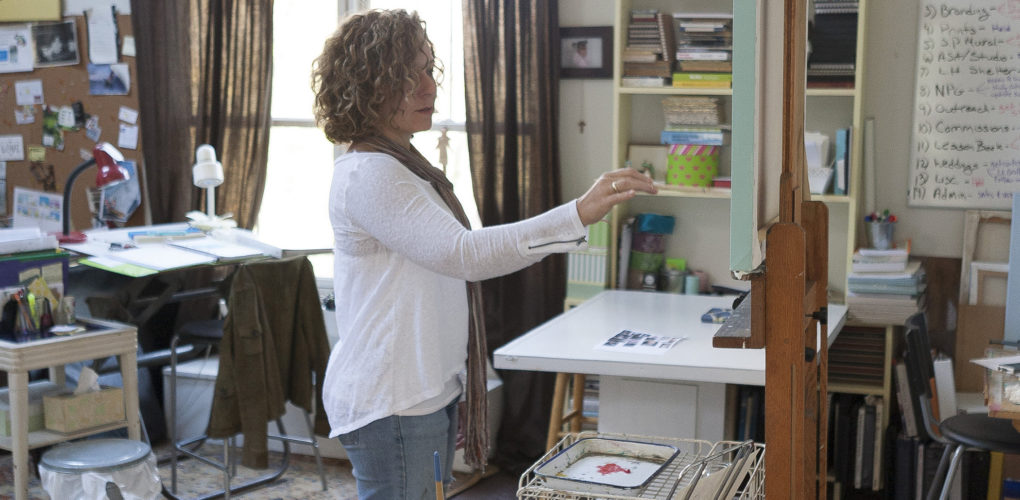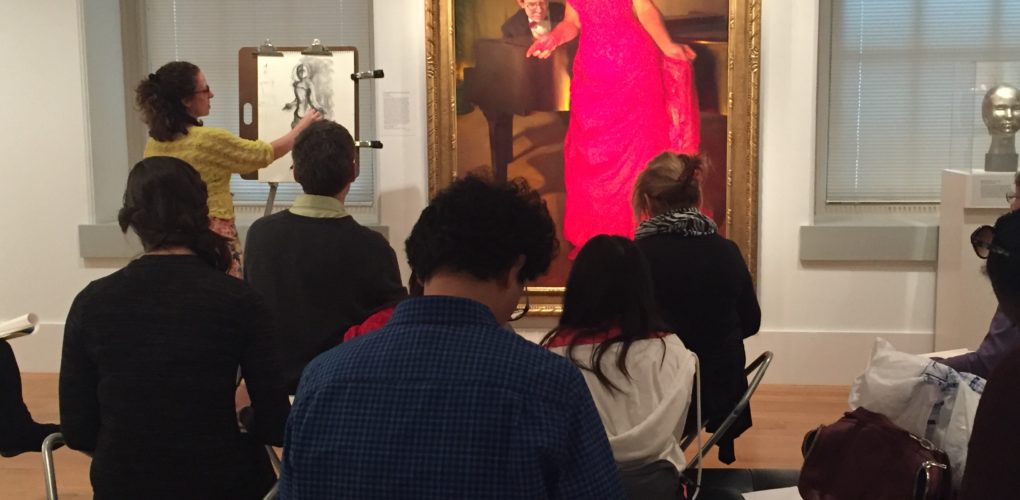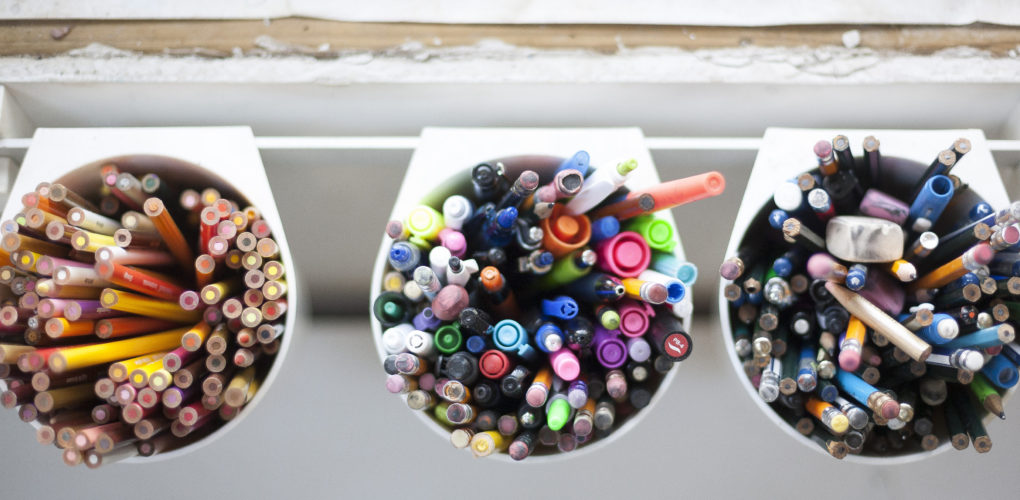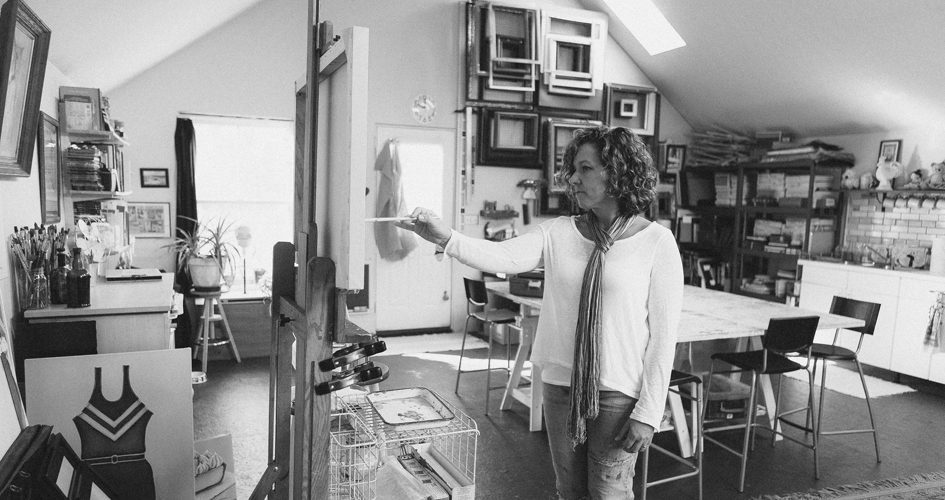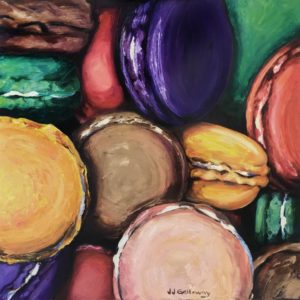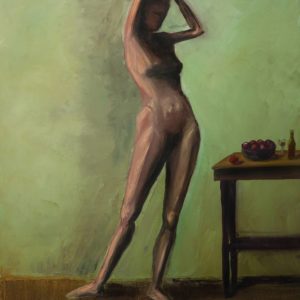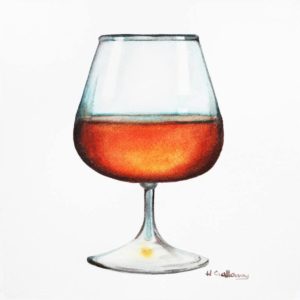Inside the Studio
 JJ Galloway’s Smorgasbord of Earthly Delights
JJ Galloway’s Smorgasbord of Earthly Delights
What are the major themes you pursue in your work?
There’s endless inspiration in foods that come from our Earth, in how those foods look in a market, and how it all ends up in a kitchen. I’m inspired by chefs who are artists in their own right and what they create. Food art is challenging in that it’s a subject that people are so familiar with, and they often have distinct memories or feelings about the subject. My art should tap into those senses and emotions and memories for both me, and the collector.
How did you first get interested in your medium, and what draws you to it specifically?
I work in both oils and watercolors and at any given time have about 3 or 4 paintings going in each medium. I’ve found a nice balance in my practice by going back and forth between the mediums. With oils, I push the paints to make them do what I want them to do and with watercolors, I often step back to let the paints “talk” to me. The trick is making sure my style remains consistent between the two mediums. That’s something that’s been evolving for years.
How has your style and practice changed over the years?
My style has slowly grown through hundreds of paintings and hours of practice. I’ve been working at this for almost 20 years, much of which I spent searching for “my style”. Thinking no one would want to collect food art I pursued every other subject. Then I finally folded and gave myself permission to just start painting what makes me happy. Food! I’m often asked why I paint food…it doesn’t make any sense to some people. I’m completely comfortable with that…it makes sense to me and I do it because I love it.
Can you walk us through your process? Do you begin with a sketch, or do you just jump in? How long do you spend on one work? How do you know when it is finished?
I have piles of still life subjects in my studio. For example there’s a stack of powdered doughnuts on my stand, next to an eggplant and an apple. The eggplant gets to go first since it will likely need to be eaten first and I’m pretty sure the doughnuts are stale. I start each oil painting with an under-glaze of either red or blue depending on the subject. I do a quick gesture with a thinned brown and block in shadows. Once that’s dry I paint the rest of the subject with both brushes and palette knives. Some oils take one day whereas others take several weeks depending on the size. With watercolors I draw out a detailed image and then erase most of the drawing down to a shadow. I use both dry brush and wet on wet techniques depending on the desired texture. These paintings take several days to several weeks. I know they’re done when my mouth is watering!
If you couldn’t be an artist, what would you do?
If I couldn’t be an artist, I would want to work for a company like The Other Art Fair! I was able to participate in the Brooklyn show in November and couldn’t get enough. I have a background in PR and event planning having graduated college with a dual degree in marketing and fine art. Before I became a full time artist, I spent almost 10 years bouncing around the marketing, event planning and public relations world starting with a job as a news reporter and ending as the public relations manager of the National Aquarium in Baltimore. I’ve thrown more large-scale events than I can count. So when I landed as an exhibitor at The Other Art Fair in Brooklyn (and next in LA) I was over the moon excited. Everything I enjoy professionally all wrapped up in one.
What was the best advice given to you as an artist?
I got two pieces of advice from two different artists that I think of almost daily. The first is never show the public anything but your best. Your reputation and the investment you’re asking a collector to make is critical to having a successful business. And second, it takes more than talent to make it as an artist, so get your business buttoned up. I talk to so many wonderfully talented artists out there with amazing portfolios. And they have no idea what to do with their art. You need to be someone people want to do business with and you need to know how to get your art in the right places to be seen by the right people.

